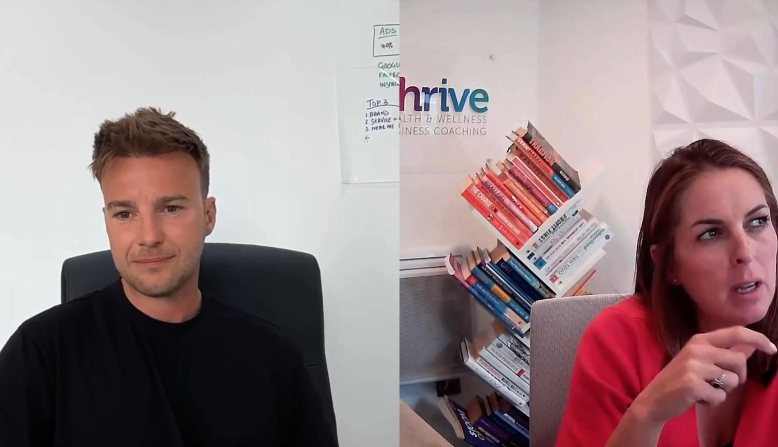Chiswick Physio: An SEO Migration Case Study
Chiswick-Physio was founded in 2008 by Nathan Carter, an established and well-respected musculoskeletal physiotherapist with long-standing ties to the local community. Nathan has been based in the Chiswick area since 2002 and has helped countless individuals progress through their recovery back to full health.
Chiswick-Physio required an optimised website as they had outgrown their existing website built with Squarespace. Klatch was tasked with managing the website migration progress to ensure an effective foundation for future growth.
Below, we run through the steps we performed for their website migration, contributing to
55 new leads from organic search alone in the first full month of their website going live.

1. Analyse existing website performance
Analyse existing user sessions and page performance
When migrating from Squarespace to WordPress, we needed to maintain existing traffic and lead performance to ensure minimal business impact. From a website audit, we determined that 85% of traffic to the website was from branded searches and that Chiswick Physio's services page could perform better. This highlighted a lot of new traffic potential, and the migration would be less risky due to the website's current page performance.
Ensure the performance of pages is improved
We worked with the design agency to ensure the new website performed better from a page speed perspective. This would contribute to a better conversion rate across channels, and as page speed is a ranking factor, Chiswick Physio may also benefit from increased website rankings.
One of SquareSpace's downfalls as a platform is its limitations in improving page speed performance. WordPress can use out-of-the-box plugins such as WPRocket and Perfmatters and other page speed tactics such as LazyLoading, to ensure all Core Web Vitals metrics pass and page speed is below Google's recommendation.
2. Conduct a content gap analysis
Identify new opportunities for pages that align with the clinic's service offering
We then created a new page targeting strategy once we established that over 80% of the traffic Chiswick Physio generated was from brand-related terms and knowing the clinic offers more services such as Shockwave Therapy, Sports Performance and Gait Analysis.
Their new site architecture ensures highly relevant traffic for their services, contributing to the clinic's lead and revenue goals.
After discussions with Nathan and his team, we uncovered 20 new service page options that we could target based on his current service offering, which would drive more non-branded traffic and contribute to more leads.
Start to build out topical ideas for future content generation
With a range of new service pages, we could also outline a new content strategy to supplement the latest pages. For example, aware that ACL rehab was a big revenue drive for the clinic and now having a service page that targets local ACL rehab searches, we wanted to create new articles that showcased Chiswick Physio's expertise in this area.
This would not only contribute to improved SEO performance for 'ACL rehab' terms, but also enable users and existing clients to benefit from their expertise.

3. Keyword research and create a page targeting strategy
Analyse traffic potential and prioritise pages based on CLV
With new pages aligned to the clinic's service offering, we analysed the current search engine result pages and local competitors. We then created a thorough and optimised SEO brief for each page.
Each page then went through a content review, an SEO review and finally a business review to ensure all content was thoroughly optimised and factually correct. This is due to the content impacting reader's health, otherwise known as Your Money Your Life content (YMYL) and under extra scrutiny from search engines.
Track all page creations with a website tracker
Over Christmas, we maintained a single Google Sheet for all relevant parties to work from to ensure all content was of the highest standard, organised and on track for the website release date.
This also ensured transparency between internal and external teams, including writers, SEOs and business personnel.
4. Create search engine optimised pages
Work in tandem with the design agency to ensure optimised pages for SEO
Chiswick Physio had tasked a design agency, Astwood, to create a clean, optimised website to contribute to their growth plans.
Astwood had created a fast, seamless website, although we needed to work collaboratively with them to ensure our new SEO-optimised content fit within the page templates they had created.
Ensure pages perform well from a speed perspective
Once existing and new content had been analysed and created, we needed to import it all and ensure optimal user experiences and on-page SEO, such as headings, internal linking, and optimised media.
5. Thorough website checks and sitemap submission
Important post-website checks ans considerations
The new website was chosen for launch between Christmas and New Year, typically one of the quietest times for clinics during a calendar year and therefore the best time to launch a new website due to minimal business revenue impact.
Once the site was live, we ran a crawl to identify technical errors, such as 404s, incorrect metadata and page performance issues. Any minor issues were fixed immediately and when Klatch was pleased with all aspects, the new sitemap was submitted to Google Search Console.
6. Continuous SEO improvements and optimisations
Assessing short and long term impact of website and business performance
Once the migration is complete and checks have been made, we move on to assessing its short-term and long-term impact. It's important to continuously check site performance after launch, daily. At Klatch, we use a range of tools to track performance.
- Google Search Console to identify indexed pages, growth in impressions and positions for keywords and pages
- Semrush to track individual page performance for target keywords over time
- Google Analytics to understand channel and conversion performance
- WebPageTest to continually analyse page performance
7. Ensure there is accurate reporting in place
Post-migration, make sure analytics tags are present on all the pages you intend to monitor
To ensure transparent and trustworthy business performance, Klatch effectively ensures that all tracking is in place to attribute marketing spend correctly.
- GA4 channel and conversion tracking
- Google Ads tracking for optimal campaign performance and effective Return on Ad Spend (ROAS) reporting
- Unique phone calls and web form tracking ensure all clinic visits and sales are effectively attributed.
- CRM analysis and reporting to ensure leads, clinic visits and sales are attributed to marketing spend
We'll also work with clinic owners and identify critical business performance metrics, such as leads, clinic visits, sales and customer lifetime value, to ensure we can contribute to their growth targets.












